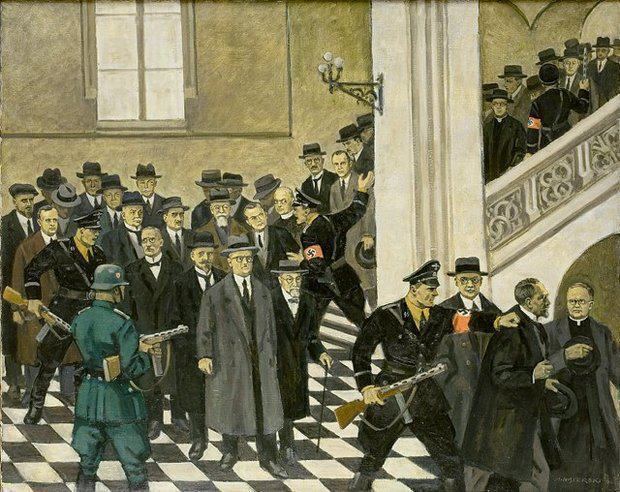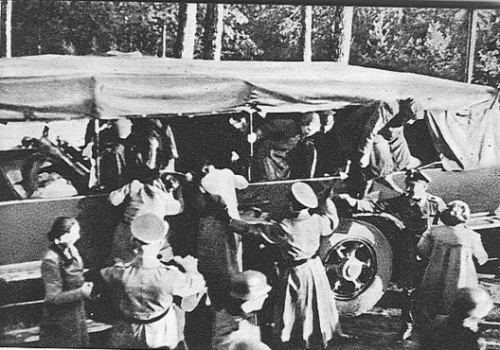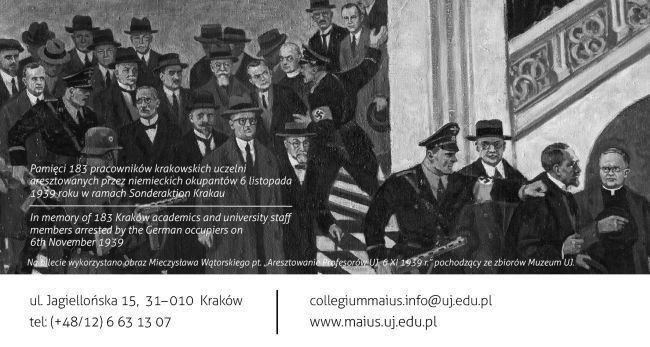Date November 6, 1939 | ||
 | ||
Target 184 academics including 105 professors and 33 lecturers from UJ, 34 professors and doctors from AGH, 4 from AE, 4 from Lublin and Wilno universities, and others Motive part of Intelligenzaktion | ||
Pami uniwersytetu niepublikowane wspomnienie zygmunta starachowicza dotycz ce sonderaktion krakau
Sonderaktion Krakau was the codename for a Nazi German operation against professors and academics of the Jagiellonian University and other universities in German occupied Kraków, Poland, at the beginning of World War II. It was carried out as part of the much broader action plan, the Intelligenzaktion, to eradicate the Polish intellectual elite especially in those centres (such as Kraków) that were slated by the Germans to become culturally German.
Contents
- Pami uniwersytetu niepublikowane wspomnienie zygmunta starachowicza dotycz ce sonderaktion krakau
- Course of operation
- Release
- In film
- References

Course of operation

A little over two months after the German Invasion of Poland, the Gestapo chief in Kraków SS-Obersturmbannführer Bruno Müller, commanded Jagiellonian University rector Professor Tadeusz Lehr-Spławiński to require all professors to attend his lecture about German plans for Polish education. The rector agreed and sent an invitation throughout the university for a meeting scheduled at the administrative centre building in the Collegium Novum (entrance pictured). On November 6, 1939 at the lecture room no. 56 (or 66, sources vary) at noon, all academics and their guests gathered; among them, 105 professors and 33 lecturers from Jagiellonian University (UJ), 34 professors and doctors from University of Technology (AGH) some of whom attended a meeting in a different room, 4 from University of Economics (AE) and 4 from Lublin and Wilno.

The academics filled the hall but no Vortrag (lecture) on education was conducted. Instead, they were told by Müller that the university did not have permission to start a new academic year (which it did), and that Poles are hostile toward German science, and act in bad faith. They were arrested on the spot by armed police, frisked and escorted out. Some senior professors were kicked, slapped in the face (Stanisław Estreicher) and hit with rifle butts. Additional 13–15 university employees and students who were onsite were also arrested, as well as the President of Kraków, Dr Stanisław Klimecki who was apprehended at home that afternoon.
All of them, 184 persons in total, were transported first to prison at Montelupich street, then to barracks at Mazowiecka, and – three days later – to a detention center in Breslau, Germany (now Wrocław, Poland), where they spent 18 days split between two prison facilities: the detention centre (Untersuchungsgefängnis, at the Świebodzka 1 Street), and the Strafgefängnis penal complex at Kleczkowska 35. The Gestapo were unprepared for such a large transfer of prisoners, and awaited permission to send them to Buchenwald concentration camp which was filled to capacity. As a result, on November 27, 1939 at night, they were loaded onto a train to Sachsenhausen concentration camp located on the other side of Berlin, and in March 1940, sent further to Dachau concentration camp near Munich after a new batch of younger academics taken prisoner arrived.
Release

Following loud international protest by prominent Italians including Benito Mussolini and the Vatican, 101 professors who were older than 40 were released from Sachsenhausen on February 8, 1940. Additional academics were released later. Many elderly professors did not survive the roll-calls held twice a day in snow and rain, and the grim living conditions in the camp where dysentery was common and warm clothes were rare. Twelve died in the camp within three months, and another five within days of release. Among the notable professors who died in the camp were Ignacy Chrzanowski (UJ; Jan 19, 1940), Stanisław Estreicher (UJ; Dec 29, 1939), Kazimierz Kostanecki (UJ; Jan 11, 1940), Antoni Meyer (AGH; Dec 24, 1939), and Michał Siedlecki (UJ; Jan 11, 1940, after roll-call). In March 1940 the able prisoners from Kraków who remained alive were sent to Dachau concentration camp and most of them, but not all, released in January 1941 on intervention.

Many of those who went through Sonderaktion Krakau and the internment, in 1942 formed an underground university in defiance of the German punitive edicts. Among the 800 students of their underground college was Karol Wojtyła, the future Pope John Paul II, taught by prof. Tadeusz Lehr-Spławiński among others.
Today there is a plaque commemorating the events of Sonderaktion Krakau in front of Collegium Novum in Kraków. Every November 6, black flags are hung outside all Jagiellonian University buildings, and the Rector of the University lays wreaths to honor those who suffered.
In film
Sonderaktion Krakau is depicted in the 2005 miniseries Karol: A Man Who Became Pope and the 2007 Polish film Katyń directed by Academy Honorary Award winner Andrzej Wajda. It was nominated for Best Foreign Language Film at the 80th Academy Awards ceremony.
